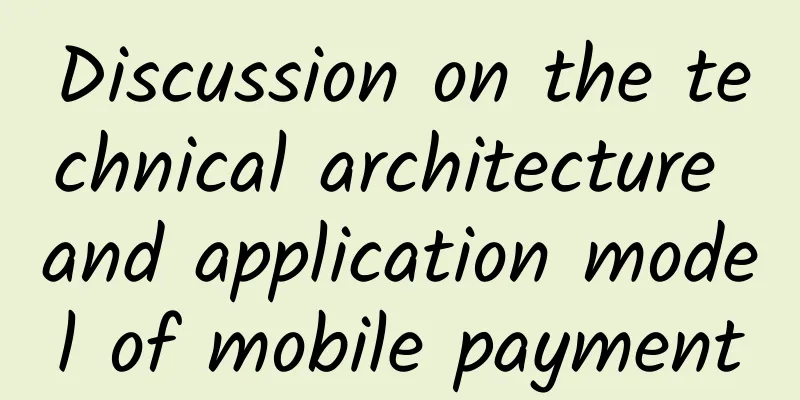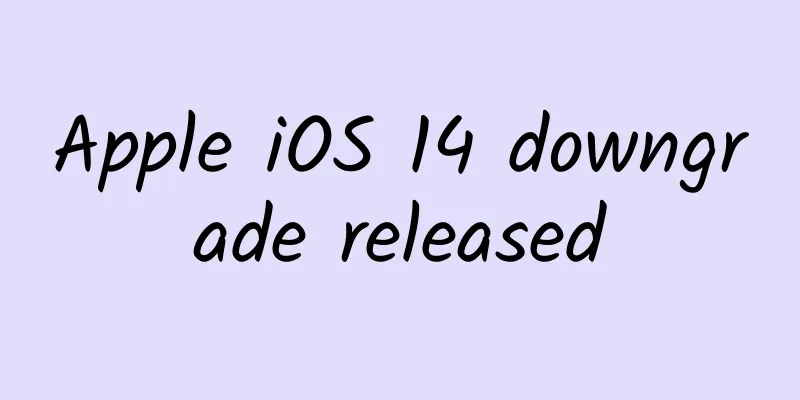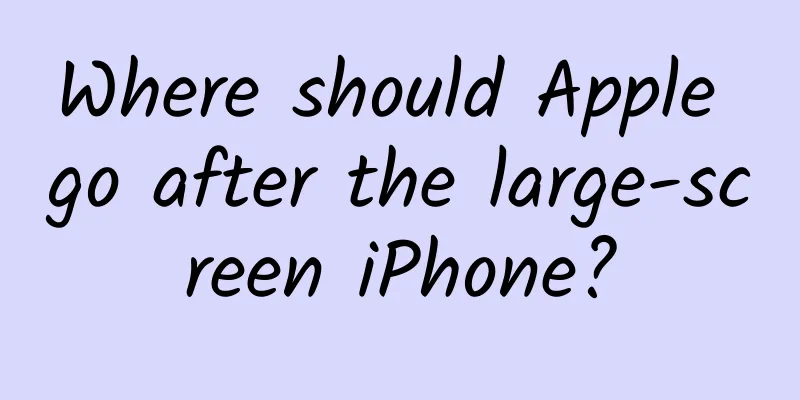Discussion on the technical architecture and application model of mobile payment

|
With the full advancement of bank card chipization, the vigorous development of mobile communication networks and the rapid popularization of smart phones, mobile finance based on mobile payment has gradually entered the field of financial services for people's livelihood. This paper discusses the mobile payment technology architecture, especially the mobile payment technology model based on financial IC cards.
1. Mobile Payment Technology Architecture Mobile payment applications are mainly divided into two categories: remote payment and near-field payment. Remote payment refers to a payment method in which a mobile terminal is connected to a mobile communication network and directly interacts with a backend server to complete transaction processing. From the perspective of the terminal carrier, mobile remote payment can also be divided into two categories: SE-based mode and non-SE mode. SE-based mode means that the terminal chip has financial functions that meet the PBOC standard, and the client software uses SE-based security service applications to sign and verify messages. The non-SE mode means that the chip only has mobile communication functions and does not have financial functions. It is generally authenticated by passwords, mobile phone text messages, etc. Near-field payment refers to a payment method in which a mobile terminal completes transaction processing online or offline at the transaction site through a physical acceptance terminal (POS, ATM). Near-field payment mainly refers to a model based on SE, and the financial functions in the terminal chip are equivalent to the functions of an ordinary financial IC card. Other near-field payment modes without SE, such as offline QR code payment, are not currently promoted as trusted payment technologies due to the lack of security technologies such as password authentication. The relationship between the various entities in the mobile payment system architecture is shown in Figure 1.
The payment content platform in Figure 1 refers to the platform that provides goods or service content; the remote payment system provides functions such as mobile terminal access, transaction information and settlement data processing for remote payment; the acquiring system is responsible for the generation and transfer of online transaction information and the collection, collation and submission of settlement data; the transfer and clearing system realizes the business transfer, clearing and settlement functions of cross-institutional payment; the account management system provides funds management, settlement and other services for bank card accounts or non-bank card settlement accounts; access channels refer to access methods such as SMS, OTA and dedicated terminals; TSM (Trusted Service Management) is the entity responsible for mobile payment security unit management and application life cycle management; the application provider system provides various mobile payment applications; the public service platform is a trusted third-party system recognized by all parties involved in mobile payment, providing institutional registration access, application registration, cross-TSM interactive transfer, SE trusted management, SE open sharing function, application sharing and other functions. 2. Service-side operation cooperation model 1. Direct cooperation model between commercial banks and communication operators From the service end, this direct cooperation model can be divided into two categories: one is that the commercial bank system and the operator system are not connected, and both parties write and read in the financial area and communication area of the chip according to their own standards. This type of cooperation requires users to go to the commercial bank branch and the operator business hall to open the financial function and communication function. The other type is the intercommunication of some information between the commercial bank system and the operator system. For example, the "CMB Wing Card" jointly launched by China Merchants Bank and Jiangsu Telecom has the basic information of the financial functions in the card pre-written when the card is made. Users only need to activate the communication function in the operator's business hall, and the operator's backend system will transmit the card activation information to the China Merchants Bank system for real-name authentication, and the financial functions in the card will be activated after passing. The model of direct cooperation between commercial banks and telecommunications operators was explored and developed in the absence of an intermediate public service platform. It is a relatively decentralized cooperation model that can provide limited application services and is less convenient for users to activate and use. 2. Cooperation model with UnionPay as the convergence point of financial institutions and communication operators In February 2013, China UnionPay's Trusted Service Management Platform TSM (hereinafter referred to as UnionPay TSM) and China Mobile's TSM achieved cross-industry docking. The commercial bank's system was connected to UnionPay TSM in a "total-to-total" manner, realizing a model of indirect cooperation between UnionPay and communication operators with UnionPay as the convergence point of financial institutions. In addition, the other two major operators, China Telecom and China Unicom, are also actively carrying out docking work with the UnionPay TSM platform. In this mode, the commercial bank system only needs to access UnionPay TSM to indirectly connect with the operator system. In this way, as long as the bank's users' mobile phones support the Near Field Communication Protocol (NFC), they can activate financial functions through the "air card activation" method. The mode of commercial banks cooperating with operators with UnionPay as the convergence point is a "head-to-head" cross-industry docking mode, which requires UnionPay TSM to connect with the TSMs of China Mobile, China Telecom, and China Unicom respectively, and still lacks a unified public service platform in the middle. However, compared with the direct cooperation model, the efficiency of cooperation among all parties has been improved, and the convenience of users opening financial and communication functions has also been greatly improved. 3. Cooperation model with the People’s Bank of China’s public service platform as the core In October 2013, the People's Bank of China's mobile financial security and trustworthy public service platform MTPS (Public Service Platform for short) passed the acceptance review and was put into trial operation. As the national mobile financial infrastructure, the platform builds a public secure and trustworthy air transmission platform for all parties in the industry, providing integrated services such as data exchange, security authentication, application management, and key management, and plays a core role in the construction of the mobile financial ecological environment. Under the public service platform system architecture, the TSM systems of UnionPay, commercial banks, and third-party payment institutions serve as access platforms for application providers, and the TSM systems of China Mobile, China Telecom, and China Unicom serve as access platforms for issuers. Application provider TSM is responsible for registering mobile financial applications that have been tested and certified on the public service platform, and providing application downloads and personalized services: Issuer TSM is responsible for issuing products that have been tested and certified and meet financial mobile payment standards, and opening financial functions for users. After users apply to open financial functions, they can download mobile financial applications through the mobile client, perform operations such as air card opening, personalization, and electronic cash deposit, and then use their mobile phones to consume on POS terminals that support "Quick Pay". In the initial stage, the TSM systems of seven institutions including China Construction Bank, UnionPay and China Mobile have been connected to the platform for trial operation. In the future, more innovative applications of mobile financial technology will be developed based on this platform. The cooperation model with the People's Bank of China's public service platform as the core has effectively solved the problems of TSM interconnection, application sharing, and entity mutual trust among all service providers, and is conducive to forming an open, collaborative and win-win mobile financial operating environment. 3. Mobile Terminal Technology Implementation Model According to the different locations of SE, there are currently three main implementation modes for mobile terminal products: NFC full terminal mode, NFC-SIM mode, and NFC-SD mode, which are to load SE in the terminal, on the SIM card, or on the SD card. In the NFC full terminal mode, SE can be integrated into the NFC controller or set independently. All three modes require the mobile phone to support NFC near-field communication function. All three modes are currently used in the market. NFC-SIM mode, such as mobile and package, is generally carried out in the cooperation mode of financial institutions and operators. Due to the high degree of standardization, low cost and good mobile phone compatibility, the application of the industrial chain is relatively good. NFC-SD mode, such as CCB SIM card, UnionPay wallet, etc., can be issued independently by the card issuing institution, but the cost is high. NFC full terminal mode requires the support of mobile phone manufacturers. It is a model that was commercialized earlier abroad, such as Apple Pay, and is still in its infancy in China. No matter which mode is used to set SE in the mobile terminal chip, the loaded financial account is no different from the financial account in the ordinary financial IC card. It can load a single electronic cash account, a debit + electronic cash composite account, a credit + electronic cash composite account, etc. *** Unlike ordinary financial IC cards, when making near-field payments, the financial function in the mobile terminal chip cannot be paid by inserting a card, and funds must be transferred through near-field contactless communication. 【Editor's recommendation】
|
<<: Will Apple open up its iOS operating system? It missed the opportunity 30 years ago
>>: Apple will release Swift 3.0 and announce the development content of the fourth version
Recommend
Google Play opens developer team in China
[[132708]] Chris Yerga, vice president of enginee...
Why can your activities attract fans but fail to retain them?
The purpose of organizing activities is not to co...
【Creative Cultivation Program】Can drinking cola cause muscle weakness?
Author: The Nutcracker Studio Reviewer: Wang Hong...
Epidemic + college entrance examination, how should we eat three meals a day?
Beijing will host the college entrance examinatio...
What is it like to "catch dolls" on the moon and "speed cars" on Mars? They can tell you the answer
What is it like to "catch dolls" 380,00...
Tie a "green ribbon" to the "Sea of Death"
In the heart of the Taklimakan Desert, known as t...
Another new product of Foton Motor, Yundu π3 with a range of over 300 kilometers, will be launched in March this year
Regarding Yuntu Automobile, although its first ma...
How did I manage to surpass Mop.com in terms of data in just two years? Many of these methods are still applicable today!
The purpose of writing this article is just to su...
What are those little pimples around the eyes? Don't pull them, or they may cause big problems!
Expert of this article: Yan Ya, PhD in Medical Bi...
There are more toxins in moldy fruits than you think! They can cause liver cancer!
Last year, my colleague treated a couple who were...
All flights in the United States are grounded. Is the culprit really an "epic" solar flare?
2023 has arrived, and everyone is gradually getti...
Understanding iOS memory management
Stories from ancient times Those who have experie...
2018 China Education Industry Promotion Trend Analysis Report!
As the saying goes, "You never stop learning...
Apple uses Swift and SwiftUI in iOS 15
[[441823]] Preface iOS 15 was released a few mont...
Renren sells 56.com at a loss of 67.1 million US dollars, and Sohu's takeover is unlikely to change the situation
The money-burning model is still continuing and t...
![Red Hat Certification RHCSA video tutorial Linux redhat 7.0 full set [theoretical video + experimental video + experimental document]](/upload/images/67cc02571ea8d.webp)








